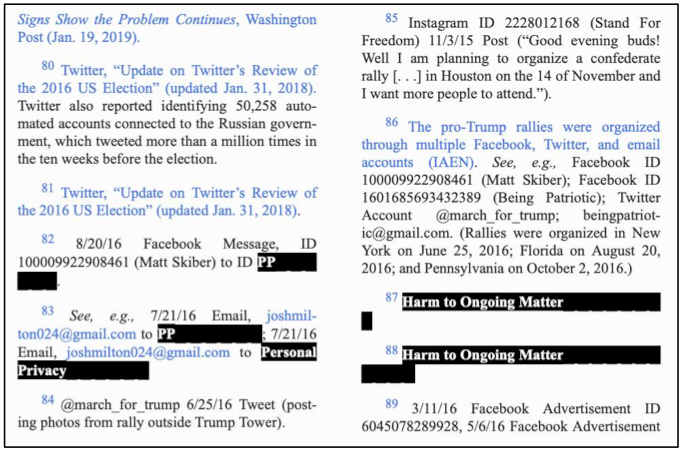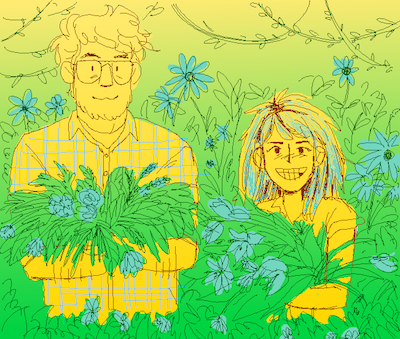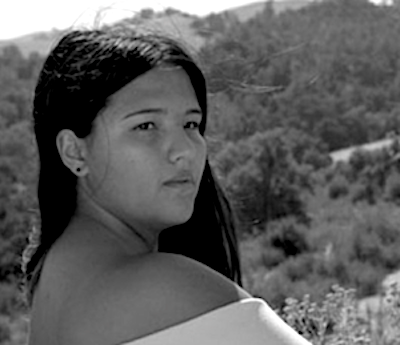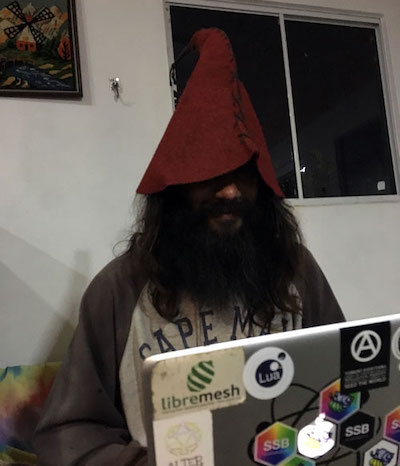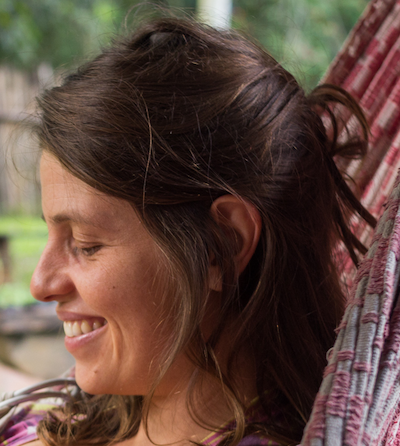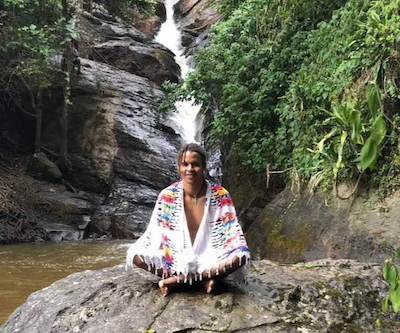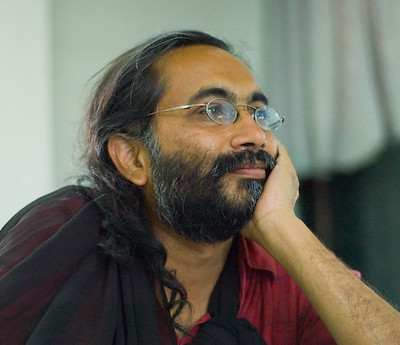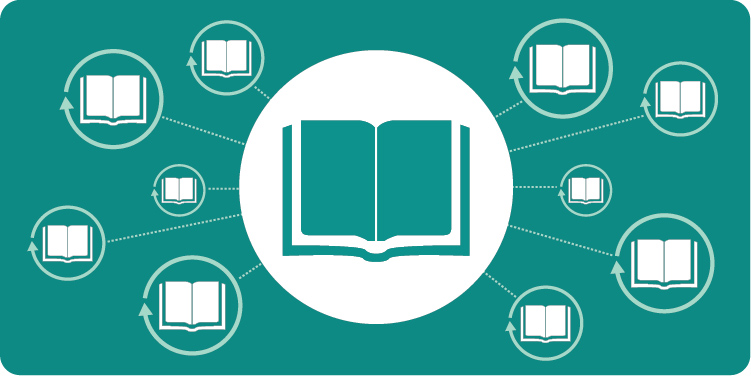Some people are tasked with seeing into the future to offer us a sense of what it may hold. Mary Lou Jepsen is one of those people. Her curiosity sparks and ignites with the slightest provocation and manifests itself in the tech products that transform our lives.
This week, her curiosity is bringing her to DWeb Camp.
In anticipation of this gathering of engineers, designers, policymakers, and utopian dreamers, I connected with Mary Lou Jepsen to talk about how she is currently thinking about the transformations happening in the technologies where she spends most of her time today — the rapidly evolving field of brain-computer communications — and the possible implications of the decentralized web for privacy, healthcare, power, and society.
In short, I asked her — what does the future hold? What kind of web do we want?
Our resulting conversation was wide-ranging and touched on everything from ethics to sensor miniaturization to the UN’s Sustainable Development Goals to — maybe most importantly — whether one day soon we might be able to converse with our dogs.
Designing, Building, & Producing at Scale
It is clear Mary Lou Jepsen thinks at scale. She did her postgraduate work at MIT and Brown in optical sciences and in the process, built one of the largest holographic displays in the world. It was the size of a full city block. She then took on product leadership roles at Intel and joined the MIT Media Lab’s faculty with a focus on graphical displays.
The power of technology deployed at scale has always driven her work. While at the Media Lab, she partnered with Nicholas Negroponte to found One Laptop per Child (OLPC) with the audacious goal of making an affordable, durable, low-power-consumption computer that could transform the educational lives of children globally. Key to that solution: leveraging the massive global supply chains and manufacturing capabilities of the tech industry. Her first at-scale dive into technology for good, OLPC shipped millions of these laptops, bringing in over $1 billion in revenue. It was work that earned her a mention on the Time 100 list in 2008.
“You have to leverage that one in a hundred kids are a genius and that most kids can figure out how to use the laptop.” Jepsen said. “A kid stops learning when they stop asking why, when the explanation for something becomes solely because ‘we’ve always done it that way.’”
The education that kids can open for themselves with even a simple connection to information demonstrates the transformative power of technology. It’s a power for good that we can’t lose track of in the midst of today’s current backlash against technology.
“On a whole, you can’t dismiss all the positive things that have happened,” she says. “Even looking at desperate poverty, it’s been halved. There are incredible statistics of global achievement.”
“How do we throw what we have into the next thing?”
Jepsen has thrown herself fully into understanding hardware development and global manufacturing systems for high tech products. Doing so meant living life as a trans-Pacific nomad, sleeping on factory floors throughout Asia and diving into product strategy, design, and engineering in Silicon Valley.
After OLPC, she founded Pixel Qi, centering the screen and graphical display in hardware design and building off the low-power designs from OLPC. She then joined Google X, advising across their portfolio on display and consumer electronics. From there, she moved to Facebook, where she drove the development of the graphical display and wearable head mount of Oculus’ VR system. Each role placed her at the cutting edge of optics, consumer electronics, and mass production.
In a parallel research ecosystem, scientists were making vast strides in neuroscience as they worked to understand brain disease, Alzheimer’s, stroke, brain cancer, and depression. These are diseases that impact hundreds of millions of patients worldwide, with more than 6 million dying from stroke alone each year. What is really going on in that mass of neurological tissue? How do we image the brain and, in doing so, devise treatments to improve neurological outcomes? Can we even read, through a scanner, someone’s thoughts?
It is inevitable, Jepsen said, that these fields — consumer tech and neurology — will collide. Our collective curiosity demands it.
“We could say nope, we don’t want to know how it works,” she said. “We could make a law against it. But it’s hard to imagine that beings with brains won’t want to know how they work.”
Her contribution to this collision is Openwater, a company Jepsen founded to 3-D map the body and mind through portable, wearable devices that use holograms to perform the equivalent of an fMRI.
It’s worth checking out her TED talk and demo of the project to grasp this system in greater detail. In short, Openwater proposes to take the way that light and sound travel through tissue, leverage recent strides in sensor miniaturization and processing capacity to measure and record those patterns, and use holography to image internal brain structures based upon those measurements. By interpreting the created images, Openwater expects to develop insights into how a particular brain is damaged — and ultimately, what it is thinking.
MRIs, the current go-to means of brain imaging and diagnosis, rely on clunky, expensive machinery. At Openwater, the product prototype is designed to be affordable, portable, and mass produced.
As the technology advances, Jepsen expects users to be able to “read/write” using the light and sound stimuli. In non-tech shorthand, the wearable could be used for both diagnosis and treatment. If this is realized, the use cases are countless. Jepsen riffs through a few scenarios: it could help those with depression understand their illness and seek treatment. Or it could offer those who are neurodiverse new ways to communicate. For example, it may help a person who has had a stroke regain language facility.
Jepsen jokes — with dead seriousness — that she even imagines a device, a little hat, worn by a dog. Could we enhance the dog’s communication? How about give him a memory bank? Or how about taking the technology to dolphins and whales to truly understand the depth of their intelligence?
“It sounds like crazy-person talk,” she admits. “But it’s not.”
On a more immediate note, one early use case the team has identified is helping emergency medical professionals determine the type of stroke a patient is experiencing. Clot strokes and hemorrhagic strokes are both treatable, but if a patient’s stroke type is misidentified and they are treated with the wrong medication, they can die. A portable device that can distinguish between these stroke types can vastly improve health outcomes.
As Openwater’s technology develops, Jepsen knows the medical benefits will have the power to transform lives. There will also come a time when we eventually can read someone’s thoughts with this technology. She recognizes that the troves of data unlocked in the processes have significant implications for society. Who holds power when you can read someone’s innermost thoughts? There will be reams of data about everything: about logic and emotion, about the input we get into our ears, eyes, and brain. There will be the ability to add input as we learn to write into brain-computer systems, perhaps changing what a person does or says.
As we race toward this future, Jepsen notes that now is absolutely the time to ask the hard questions and define what responsibility means at this new frontier. To ask questions about the storage, distribution, privacy and ownership of data. These questions are already being asked, particularly by many involved with the development of the decentralized web. Jepsen sees DWeb Camp as an opportunity to bring these questions to the front and develop community around their answers.
Jepsen doesn’t yet know what the answers are, but perhaps, she notes, it involves involves technical solutions. And perhaps it includes a new declaration of human rights.
With the Pioneers
The importance of these questions brought our conversation back to DWeb Camp, an idyllic and raucous gathering of individuals working on decentralized web protocols and applications. Widely citing the failure of Web 2.0 to provide certain protections — of people, communities, economies — this community is building new protocols for a better web, the web we want and deserve.
As a student of the future, Jepsen has been following the DWeb movement and understands that the systems that may come from it may have profound implications for the storage and sharing of data. In turn, they will impact how our technology and society is structured.
What is the architecture of the next form of Internet?
From her perspective at the cutting edge of brain-computer communication, she has a few priorities to offer for consideration at the camp.
Privacy
The recoil against technology has been reverberating throughout the tech ecosystem as users begin to understand just how deeply individual privacy has eroded in recent years. The countless small pieces of data vacuumed from our click-trails have become proprietary to the companies that collect them and, when paired with immense processing capacity, become incredibly valuable.
That flood of data will build exponentially as technologies like Openwater go mainstream. Coming from a healthcare background, Jepsen sees the importance of addressing privacy head on. At first this would entail giving medical data standard sensitivity. Later, however, it will have to account for the stark responsibility over data that is synonymous with people’s private thoughts.
How do we insure that only those who wish to share their thoughts with have access to them? Can we create a distributed system in which access to personal thoughts is as ephemeral as desired?
Experimentation
Any time you type into a Google search bar, several dozen experiments are being run on you. “Why isn’t it the same in the doctor’s office?” Jepsen asks. There are legal guidelines, like HIPAA, that govern sharing medical data, of course, and provide key patient protections while facilitating research.
Jepsen however, offers the hypothetical of whether, through the decentralized web, within these bounds each hospital could be its own archive. Hospitals could process information around treatment trajectory, cost, money, time — even pain and suffering — to help meet the needs of patients more immediately. We could, she insists, understand so much more about disease if we could readily take the information we have about disease and put it to work.
Energy and Resource Use
The amounts of neurological data, as mentioned, are immense. So is the energy and processing capacity needed to make sense of it. How can we ensure that the system we create does not condemn us to further resource exploitation?
Jepsen readily admits that, as a multi-disciplinary/anti-disciplinary outsider to the decentralized web community, she doesn’t yet know if the decentralized web is moving in these directions. What she has identified there, however, is a wealth of deep thinking, experimentation, and project design that, as so many trends in technology before, has sparked her curiosity.
“I am going to learn. To ask questions.” she said, her curiosity flaring, excited by the very idea of new community and new ideas. “I bring a different healthcare, hardware, education background. How to bring in this different background and think with the pioneers in this area and hopeful contribute to the community building around it.”
The Future We Want
“How do we define how to be responsible?” Jepsen asks.
We understand that the future we want is different from the future we have. Perhaps decentralization is the answer. Perhaps it is not. But simply asking the question points to the importance of gatherings like DWeb Camp: informal, long-form, community-driven moments to hit pause on the pressure of shipping product to think about the social and ethical implications of what is being created.
“These are the tools of our time. It’s how everything gets done, it’s like oxygen to us,” Jepsen said. “We can’t breathe without Internet and Wi-Fi. It’s even hard to be on a plane without it!”
As vital elements to our contemporary lives, we should all contribute to shaping these tools in development to ensure they reflect our collective values. We are in the middle of a moment in which we now see dark and daunting implications of technology. There are, Jepsen points out, a series of “telling and chilling stories” today from Brexit and Myanmar to rise of the alt-right in the United States. These examples fill the news and are cited as proof points to a runaway machine, controlled by no one and beneficial only to extremists.
Conversely, the positive impacts of technology are now so seamlessly integrated into daily life that they are easy to overlook. But she notes that global poverty and violence are on the decline and opportunity for education, security, and meaningful work never more present. Much of this progress is related to technology’s advance.
“Technology is a great enabler,” Jepsen said. “Historically for all humanity it brings good and bad. We need to be clear eyed in thinking of the future for 20, 50, and 100 years of the product. How do we define how to be responsible?”
Responsibility must be a group project. It is a community coming together to articulate shared values, technical learnings, and hopes for the future.
“Camp is a really good setting for it,” Jepsen said. “There is more time. You can get into non-confrontational conversations and develop a rapport with someone you facially disagree with. You can listen in another way. Sure, we’re all technologists, but that’s just the first piece of anything we create.”
—————————————
Mary Lou Jepsen will be offering a workshop on Saturday July 20th at DWeb Camp entitled “Towards Practical Telepathy — How to Store Private Thoughts.” Join this discussion as she and others dive into how we might structure data storage and sharing for big, personal, sensitive data sets and discuss what role a decentralized system may or may not have in enabling this future.
For extra learning, check out her TED talk and presentation at the Long Now.
Mary Lou Jepsen is the Founder and CEO of Openwater.




